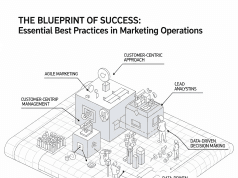In the digital age, having a website is just the starting point for establishing an online presence. The real challenge lies in ensuring that your site is easily discoverable by your target audience. This is where Search Engine Optimization (SEO) comes into play. By implementing effective SEO strategies, you can significantly enhance your website’s visibility and attract more organic traffic. Here’s a comprehensive guide to unlocking the secrets of SEO.
Understanding SEO
SEO is the practice of optimizing your website to improve its ranking on search engine results pages (SERPs). The higher your site ranks, the more likely users are to visit. Search engines like Google use complex algorithms to determine which sites appear at the top of these results. Factors such as keywords, content quality, site speed, and user experience all contribute to your site’s SEO performance.
Proven Strategies for Boosting Visibility
1. Keyword Research
The foundation of SEO is effective keyword research. This involves identifying the phrases and terms your audience uses when searching for information related to your niche. Tools like Google Keyword Planner, SEMrush, and Ahrefs can assist you in finding high-volume keywords with low competition.
Tips:
- Focus on long-tail keywords that are more specific to your niche, as they often have less competition and higher conversion rates.
- Incorporate relevant keywords naturally throughout your content, including in titles, headers, and meta descriptions.
2. High-Quality Content Creation
Content is king in the realm of SEO. Producing high-quality, informative, and engaging content not only appeals to your audience but also signals to search engines that your site is valuable.
Tips:
- Aim to answer common questions and solve problems for your audience.
- Utilize various content formats such as blog posts, infographics, videos, and podcasts to engage different segments of your audience.
- Regularly update your content to keep it relevant and fresh.
3. On-Page SEO Optimization
On-page SEO refers to the techniques used within your website to enhance its performance in search engines. This includes optimizing title tags, meta descriptions, headers, and URL structures.
Tips:
- Ensure titles and meta descriptions are compelling and include keywords.
- Use header tags (H1, H2, H3) to structure your content effectively.
- Optimize images with alt text, which also improves accessibility.
4. Technical SEO
Technical SEO involves optimizing the infrastructure of your website. This ensures that search engines can crawl and index your site efficiently.
Tips:
- Improve site speed by optimizing images, using caching, and reducing unnecessary scripts.
- Make your website mobile-friendly, as search engines prioritize mobile optimization.
- Create an XML sitemap and a robots.txt file to guide search engine crawlers.
5. Building Backlinks
Backlinks, or inbound links from other websites to yours, are a crucial factor in SEO. They act as votes of confidence, indicating to search engines that your site is credible and valuable.
Tips:
- Engage in guest blogging to reach new audiences and earn backlinks.
- Build relationships with influencers and thought leaders in your industry.
- Create shareable content like infographics or industry reports to encourage organic backlinks.
6. User Experience (UX) Enhancements
User experience plays an increasingly important role in SEO. If visitors find your site hard to navigate or slow to load, they are likely to leave quickly, increasing your bounce rate.
Tips:
- Ensure your site has a clean, intuitive layout.
- Include clear calls-to-action (CTAs) to guide users to the next steps.
- Use analytics tools to monitor user behavior and make adjustments based on data.
7. Local SEO
For businesses that serve specific geographic areas, local SEO is essential. This involves optimizing your online presence to attract more business from relevant local searches.
Tips:
- Claim and optimize your Google My Business listing.
- Encourage customer reviews and maintain an active presence on local directories.
- Use local keywords and create content relevant to your community.
Conclusion
SEO is an ongoing process that requires consistency, adaptability, and a willingness to learn. By implementing these proven strategies, you can significantly enhance your website’s visibility and drive more organic traffic. Remember, the digital landscape is ever-evolving, so staying informed about new trends and best practices will keep your site ahead of the competition. Unlocking the secrets of SEO can lead to substantial growth for your online presence, ultimately helping you achieve your business goals.









